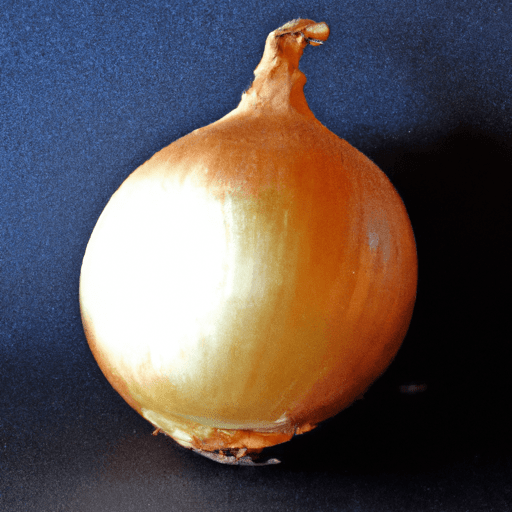All About Yellow Onions: A Versatile Ingredient in Your Kitchen
If you’ve ever cooked a savory dish, chances are you’ve encountered the humble yellow onion. With its distinct flavor profile, the yellow onion is a staple ingredient in kitchens across the globe. In this blog post, we’ll delve into the wonderful world of yellow onions - from their taste and common uses in cooking to their nutritional value and intriguing history.
Taste Profile: A Perfect Balance of Sweet and Tangy
Yellow onions are known for their pungent aroma and bold flavor. When raw, they can be quite sharp and bring tears to your eyes. However, when cooked, their flavor mellows out, and they develop a delicious sweetness. This delicate balance of sweet and tangy flavors makes them a versatile ingredient that enhances a wide variety of dishes.
Common Uses in Cooking: From Soups to Caramelized Delights
Yellow onions serve as a flavor foundation in countless recipes. They form the aromatic base for soups, stews, and sauces, infusing them with depth and richness. Sautéed yellow onions are a go-to ingredient in many stir-fries, adding a savory note to the dish. Additionally, yellow onions shine when caramelized, transforming into golden-brown, sweet delights that elevate dishes like French onion soup or onion tart.
Their versatility doesn’t stop there! Thinly sliced raw yellow onions add a vibrant crunch and sharpness to salads, sandwiches, and salsas. Pickling yellow onions is another way to enjoy their unique flavor on burgers, tacos, or alongside grilled meats.
Nutritional Value: Packed with Essential Nutrients
Beyond their culinary prowess, yellow onions are also a nutritional powerhouse. They are low in calories and packed with vitamins and minerals. One medium-sized yellow onion provides about 44 calories, while offering a host of beneficial nutrients, including:
- Vitamin C: Boosts the immune system and acts as an antioxidant.
- Fiber: Supports digestion and promotes a feeling of fullness.
- Folate: Essential for cell growth and metabolism.
- Potassium: Important for heart health and proper muscle function.
Furthermore, yellow onions contain sulfur compounds such as quercetin and allicin, which are believed to have various health benefits, including anti-inflammatory and antioxidant properties.
History and Fun Facts: A Staple Spice in Ancient Civilizations
Yellow onions have a rich history dating back over 5,000 years. They were cultivated in ancient Egypt, where they symbolized eternity due to their concentric rings. Onions were also found in the tombs of pharaohs, indicating their significant cultural importance.
Interestingly, onions were used as currency in ancient civilizations, including in Egypt and Rome. They were considered a valuable commodity due to their versatility and long shelf life. Onions were even offered as a sacrifice to the gods in some cultures.
In medieval Europe, onions were widely used not only for culinary purposes but also for their supposed medicinal properties. They were believed to have healing powers and were used to treat ailments such as headaches and snake bites.
Incorporating Yellow Onions into Your Cooking
Now that you’re more familiar with the enticing world of yellow onions, it’s time to incorporate them into your culinary adventures. Whether you’re looking to add depth to a hearty soup, infuse sweetness into your caramelized onions, or enjoy their crisp bite in a salad, yellow onions are an essential ingredient in any kitchen.
Next time you reach for these golden bulbs, remember the centuries of history and flavor they bring to your dishes. Bon appétit!
Note: While yellow onions are generally safe for consumption, some individuals may be allergic or intolerant to onions. Consult a healthcare professional if you have any concerns.
Yellow Onions
Origin: Yellow onions (Allium cepa) are believed to have originated in Central Asia. They have been cultivated for over 5,000 years and are one of the most widely used types of onions globally.
Common Uses: Yellow onions are incredibly versatile and are used in various cuisines around the world. They are commonly used as a base ingredient in soups, stews, sauces, and stocks. They can also be used raw in salads, salsas, and sandwiches, adding a savory flavor to the dishes.
Nutritional Benefits: Yellow onions are low in calories and a good source of vitamins and minerals. They contain vitamin C, which is important for a healthy immune system, and small amounts of other vitamins like vitamin B6 and folate. They are also a source of dietary fiber and contain antioxidants like quercetin, which may have anti-inflammatory properties.
Unique Properties: Yellow onions have a pungent and robust flavor with a slightly sweet undertone. When cooked, they become tender and develop a rich, caramelized flavor. Their strong flavor can vary in intensity, with some varieties being milder than others.
Historical Significance: Onions have a long history and have been cultivated and used for various purposes throughout ancient civilizations. Ancient Egyptians considered onions to be a symbol of eternity due to their concentric rings symbolizing immortality. Onions were also valued for their medicinal properties and have been used for centuries to treat ailments such as coughs, infections, and even as a diuretic.
Remember to always wash and peel onions before use, and be cautious when chopping as their pungent vapors can make eyes tear up.




Use the share button below if you liked it.
It makes me smile, when I see it.